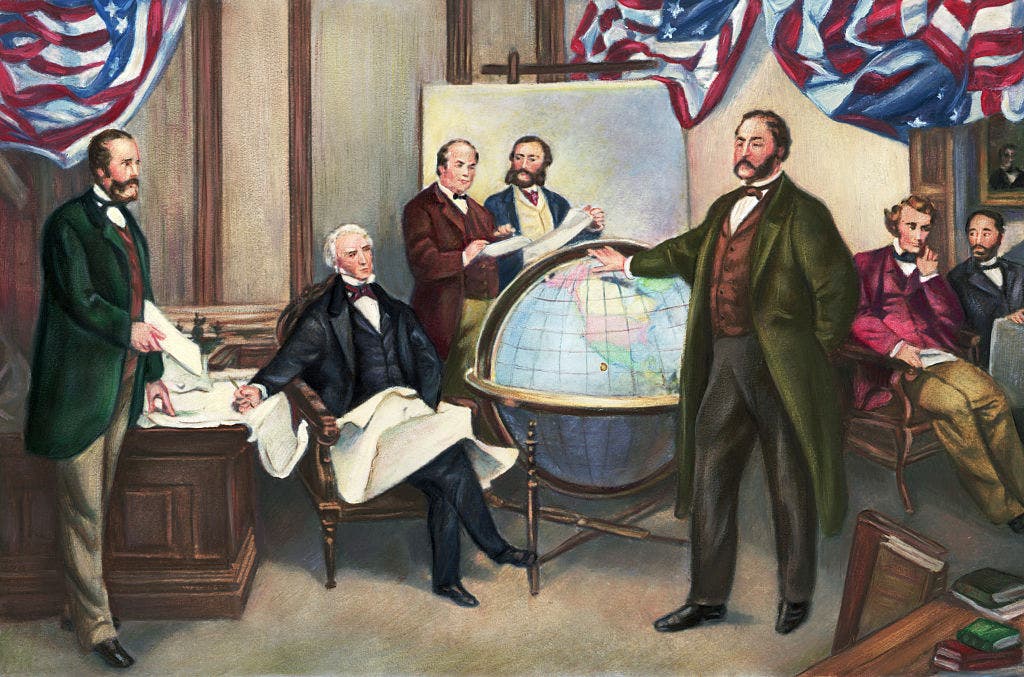On October 18, 1867, the United States made a historic deal to purchase the vast territory of Alaska from Russia for $7.2 million. This transfer of 665,000 square miles of land had a significant impact on the geopolitical balance of power still felt today. The purchase marked the end of Russian efforts to expand trade and settlements to the Pacific coast of North America, and contributed to the rise of the United States as a great power in the Asia-Pacific region.
After months of negotiations and political wrangling, the deal was finalized with the lowering of the Russian flag on Castle Hill in Sitka and the raising of the American flag. This historical event is celebrated each year in Alaska as Alaska Day, an official state holiday. The purchase of Alaska, for just 1.7 cents per acre, was initially seen as wasteland by both nations. Critics attacked Secretary of State William Seward and President Andrew Johnson for what they believed was a waste of taxpayer dollars on what they called “Seward’s folly” or “Seward’s icebox”.
Russian nationalists today lament the loss of such a vast territory of natural resources. In hindsight, some officials have suggested that if Russia still possessed Alaska, the geopolitical landscape would be different. Russian official Vyacheslav Volodin even suggested that Russia might try to reclaim Alaska in response to sanctions imposed over the war in Ukraine. However, at the time of the purchase, Czar Alexander II was reportedly willing to give the land away, as it was seen as valueless and a burden.
Public opinion about the Alaska purchase began to change in 1880 with the discovery of gold in Alaska, leading to the Alaska Gold Rush that drew Americans to the territory. Alaska eventually became the 50th state to join the union on January 3, 1959. Alaska Day on October 18 is a celebrated date in the state’s history, with Sitka hosting a week-long festival culminating in a reenactment of the changing of the flag on Castle Hill. The purchase of Alaska for a meager price has proven to be a pivotal moment in history that shaped the future of both the United States and Russia.
The United States and Russia share a unique geographic proximity today, with just 2.4 miles of ocean separating the two nations in the Bering Strait. Despite the initial criticisms of the Alaska purchase, the discovery of natural resources and the subsequent influx of settlers during the gold rush led to the territory’s development and eventual statehood. Alaska remains a valuable and strategic part of the United States, with Alaska Day serving as a reminder of the historical significance of the purchase and the ongoing impact of the deal on global geopolitics today.


